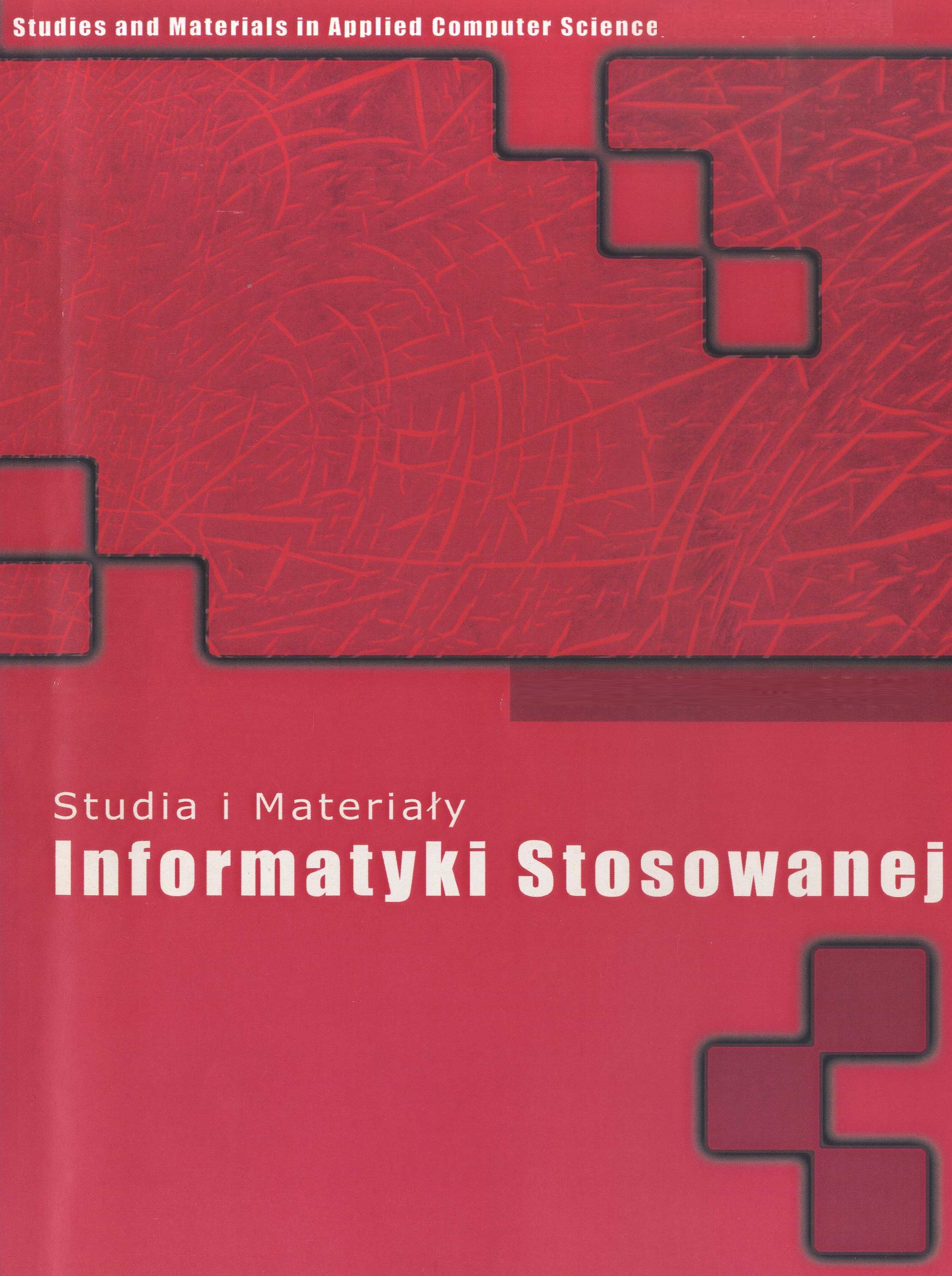Możliwości automatyzacji elektrostymulacji języka – podejście obliczeniowe
DOI:
https://doi.org/10.34767/SIMIS.2023.02.04Słowa kluczowe:
elektrostymulacja, język jama ustna, porażenia, mowaAbstrakt
Celem pracy jest ocena, w jakim stopniu obecny rozwój automatyzacji elektrostymulacji języka stanowi podstawę do opracowania nowej grupy rozwiązań klinicznych i technologicznych. Naukowcy i inżynierowie mogą przyczynić się do rozwoju skutecznych, bezpiecznych i szeroko stosowanych technologii elektrostymulacji języka o różnorodnych zastosowaniach w opiece zdrowotnej i produktach konsumenckich.
Bibliografia
Chekhchoukh A, Glade N. Influence of sparkle and saccades on tongue electro-stimulation-based vision substitution of 2D vectors. Acta Biotheor. 2012; 60(1-2):41-53. DOI: 10.1007/s10441-012-9148-2.
Chekhchoukh A., Goumidi M., Vuillerme N., Payan Y., Glade N. Electrotactile vision substitution for 3D trajectory following. Annu Int Conf IEEE Eng Med Biol Soc. 2013, 2013, 6413-6. DOI: 10.1109/EMBC.2013.6611022.
Chekhchoukh A., Vuillerme N., Payan Y., Glade N. Effect of saccades in tongue electrotactile stimulation for vision substitution applications. Annu Int Conf IEEE Eng Med Biol Soc. 2013, 2013, 3543-6. DOI: 10.1109/EMBC.2013.6610307.
Chenu O., Vuillerme N., Demongeot J., Payan Y. A wireless lingual feedback device to reduce overpressures in seated posture: a feasibility study. PLoS One. 2009, 4(10), e7550. DOI: 10.1371/journal.pone.0007550.
Chwieśko-Minarowska S., Minarowski Ł., Kuryliszyn-Moskal A., Chwieśko J., Chyczewska E. Rehabilitation of patients with obstructive sleep apnea syndrome. Int J Rehabil Res. 2013, 36(4), 291-7. DOI: 10.1097/MRR.0b013e3283643d5f.
Duch W., Nowak W., Meller J., Osiński G., Dobosz K., Mikołajewski D., Wójcik G.M. Computational approach to understanding autism spectrum disorders. Computer Science 2014, 13 (2), 47-47.
Duch W., Nowak W., Meller J., Osiński G., Dobosz K., Mikołajewski D. Consciousness and attention in autism spectrum disorders. Proceedings of Cracow Grid Workshop 2010, 202-211.
Galas K., Efektywność klasyfikacji mrugnięcia z wykorzystaniem wybranych sieci neuronowych. Studia i Materiały Informatyki Stosowanej 2021, 13(1), 11-16.
Grechko V.E., Borisova E.G. The use of transcutaneous electric nerve stimulation in the combined treatment of glossalgia. Zh Nevrol Psikhiatr Im S S Korsakova. 1995, 95(5), 19-21.
Luo P., Zhang J., Yang R., Pendlebury W. Neuronal circuitry and synaptic organization of trigeminal proprioceptive afferents mediating tongue movement and jaw-tongue coordination via hypoglossal premotor neurons. Eur J Neurosci. 2006, 23(12), 3269-83. DOI: 10.1111/j.1460-9568.2006.04858.x.
Macko, M., Szczepański Z., Mikołajewski D., Mikołajewska E., Listopadzki S. The method of artificial organs fabrication based on reverse engineering in medicine. Proceedings of the 13th International Scientific Conference: Computer Aided Engineering Springer 2017, 353-365.
Maeda E., Katsura H., Nin T., Sakaguchi-Fukunaga A., Mishiro Y., Sakagami M. Change of somatosensory function of the tongue caused by chorda tympani nerve disorder after stapes surgery. Laryngoscope. 2018, 128(3), 701-706. DOI: 10.1002/lary.26598.
Meldman MJ. Pleasure through lingual electrostimulation. Int J Neuropsychiatry. 1965, 1(4), 411-4.
Merzhanova GKh. Deiatel'nost' trekhneĭronnykh korkovykh mikrosistem u koshek pri uslovnoreflektornom perekliuchenii [Activity of 3-neuron cortical microsystems in the cat during conditioned reflex switchover]. Zh Vyssh Nerv Deiat Im I P Pavlova. 1985, 35(3), 435-41.
Mikołajewska E., Mikołajewski D. Roboty rehabilitacyjne. Rehabil. Prakt 2010; 4, 49-53.
Mikołajewska E., Mikołajewski D. Zastosowania automatyki i robotyki w wózkach dla niepełnosprawnych i egzoszkieletach medycznych. Pomiary Automatyka Robotyka 15 (5), 58-63.
Mikołajewska E., Prokopowicz P., Mikolajewski D. Computational gait analysis using fuzzy logic for everyday clinical purposes–preliminary findings. Bio-Algorithms and Med-Systems 2017, 13 (1), 37-42.
Moreau-Gaudry A., Prince A,, Demongeot J., Payan Y. A new health strategy to prevent pressure ulcer formation in paraplegics using computer and sensory substitution via the tongue. Stud Health Technol Inform. 2006, 124, 926-31.
Nishii T., Nin T., Maeda E., Fukunaga A., Mishiro Y., Sakagami M. Earlier recovery of lingual dysfunction after middle ear surgery in pediatric versus adult patients. Laryngoscope. 2020, 130(4), 1016-1022. DOI: 10.1002/lary.28165.
Pinheiro D.L.D.S.A., Alves G.Â.D.S., Fausto F.M.M., Pessoa L.S.F., Silva L.A.D., Pereira S.M.F., Almeida L.N.A. Effects of electrostimulation associated with masticatory training in individuals with down syndrome. Codas. 2018, 30(3), e20170074. DOI: 10.1590/2317-1782/20182017074.
Piszcz A., BCI w VR: imersja sposobem na sprawniejsze wykorzystywanie interfejsu mózg-komputer. Studia i Materiały Informatyki Stosowanej 2021, 13(1), 5-10
Prokopowicz P., Mikołajewski D., Tyburek K., Mikołajewska E. Computational gait analysis for post-stroke rehabilitation purposes using fuzzy numbers, fractal dimension and neural networks. Bulletin of the Polish Academy of Sciences: Technical Sciences, 2020, 68 (2), 191-198, DOI: 10.24425/bpasts.2020.13184.
Rojek I., Mikołajewski D., Kotlarz P., Macko M., Kopowski J. Intelligent system supporting technological process planning for machining and 3D printing. Bulletin of the Polish Academy of Sciences. Technical Sciences 2021, 69 (2), e136722, DOI: 10.24425/bpasts.2021.136722.
Rojek I., Mikołajewski D., Macko M., Szczepański Z., Dostatni E.Optimization of extrusion-based 3D printing process using neural networks for sustainable development. Materials 2021, 14 (11), 2737.
Roux F.E., Djidjeli I., Durand J.B. Functional architecture of the somatosensory homunculus detected by electrostimulation. J Physiol. 2018, 596(5), 941-956. DOI: 10.1113/JP275243.
Roux F.E., Niare M., Charni S., Giussani C., Durand J.B. Functional architecture of the motor homunculus detected by electrostimulation. J Physiol. 2020, 598(23), 5487-5504. DOI: 10.1113/JP280156.
Sakaguchi A., Nin T., Katsura H., Mishiro Y., Sakagami M. Trigeminal and taste sensations of the tongue after middle ear surgery. Otol Neurotol. 2013, 34(9), 1688-93. DOI: 10.1097/MAO.0b013e3182979278.
Santos J.K., Silvério K.C., Diniz Oliveira N.F., Gama A.C. Evaluation of Electrostimulation Effect in Women With Vocal Nodules. J Voice. 2016; 30(6), 769.e1-769.e7. DOI: 10.1016/j.jvoice.2015.10.023.
Talal N., Quinn J.H., Daniels T.E. The clinical effects of electrostimulation on salivary function of Sjögren's syndrome patients. A placebo controlled study. Rheumatol Int. 1992, 12(2), 43-5. DOI: 10.1007/BF00300975.
Thuler E.R., Rabelo F.A.W., Santos Junior V., Kayamori F., Bianchini E.M.G. Hypoglossal nerve trunk stimulation: electromyography findings during drug-induced sleep endoscopy: a case report. J Med Case Rep. 2023, 17(1), 187. DOI: 10.1186/s13256-023-03877-2.
Thumfart W.F. From larynx to vocal ability. New electrophysiological data. Acta Otolaryngol. 1988, 105(5-6), 425-31. DOI: 10.3109/00016488809119496.
Verse T. "De rhoncho dormientium"- Vom Schnarchen der Schlafenden. Ther Umsch. 2004, 61(5), 313-23. DOI: 10.1024/0040-5930.61.5.313.
Wiltfang J., Klotz S., Wiltfang J., Jordan W., Cohrs S., Engelbe W., Hajak G. First results on daytime submandibular electrostimulation of suprahyoidal muscles to prevent nighttime hypopharyngeal collapse in obstructive sleep apnea syndrome. Int J Oral Maxillofac Surg. 1999, 28(1), 21-5.
Pobrania
Opublikowane
Numer
Dział
Licencja
Prawa autorskie (c) 2024 Studia i Materiały Informatyki Stosowanej

Utwór dostępny jest na licencji Creative Commons Uznanie autorstwa – Na tych samych warunkach 4.0 Miedzynarodowe.

